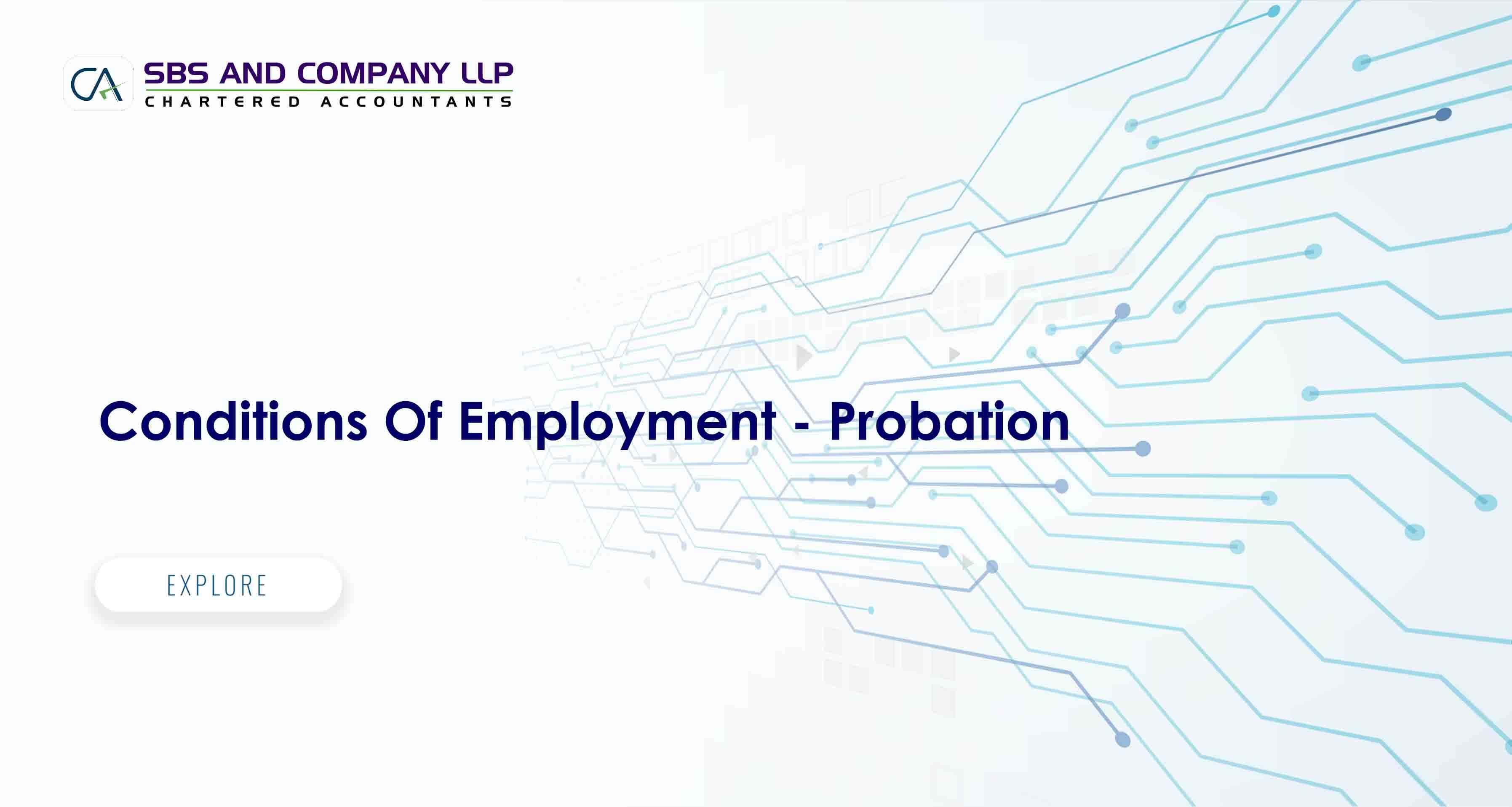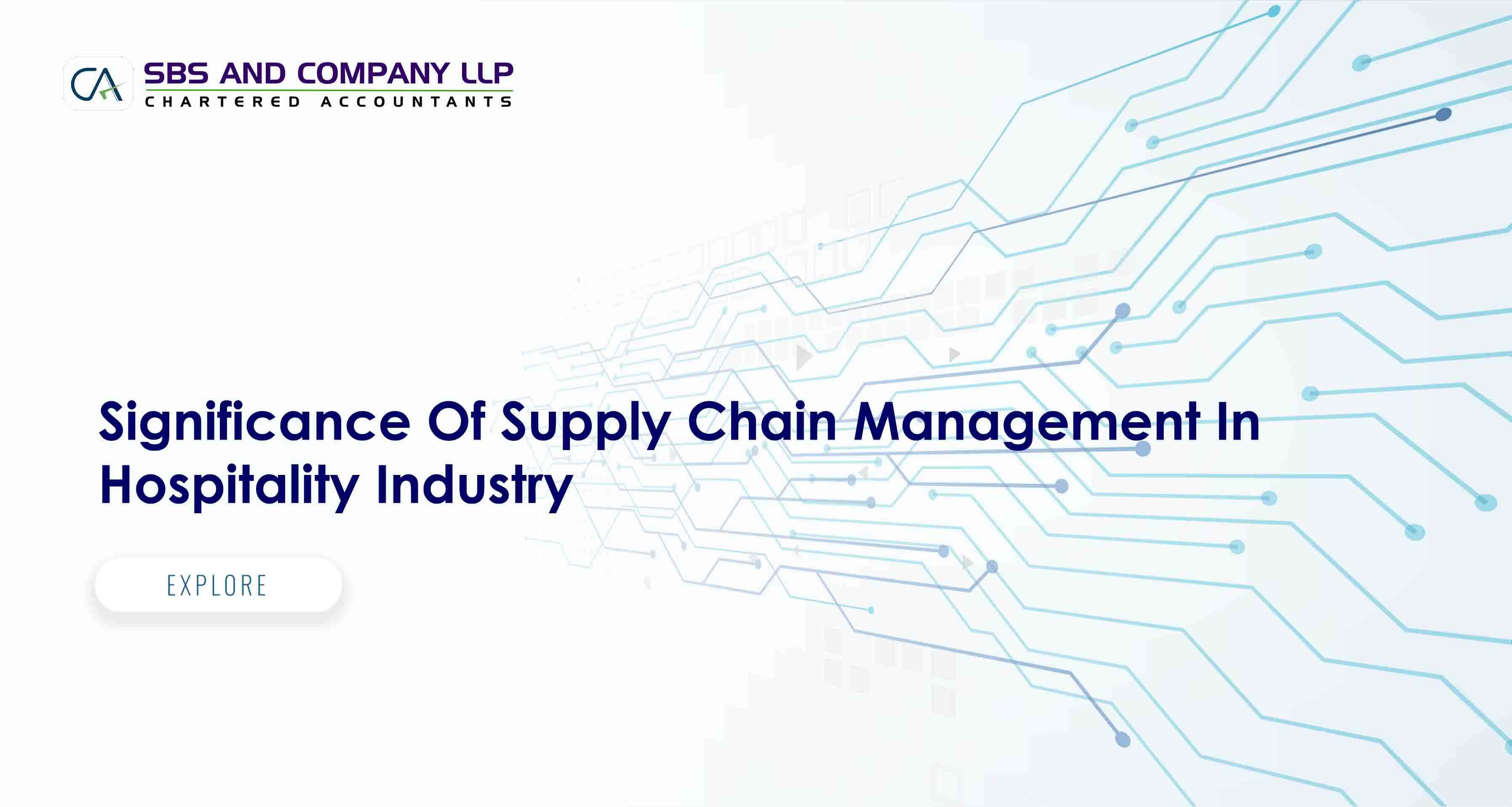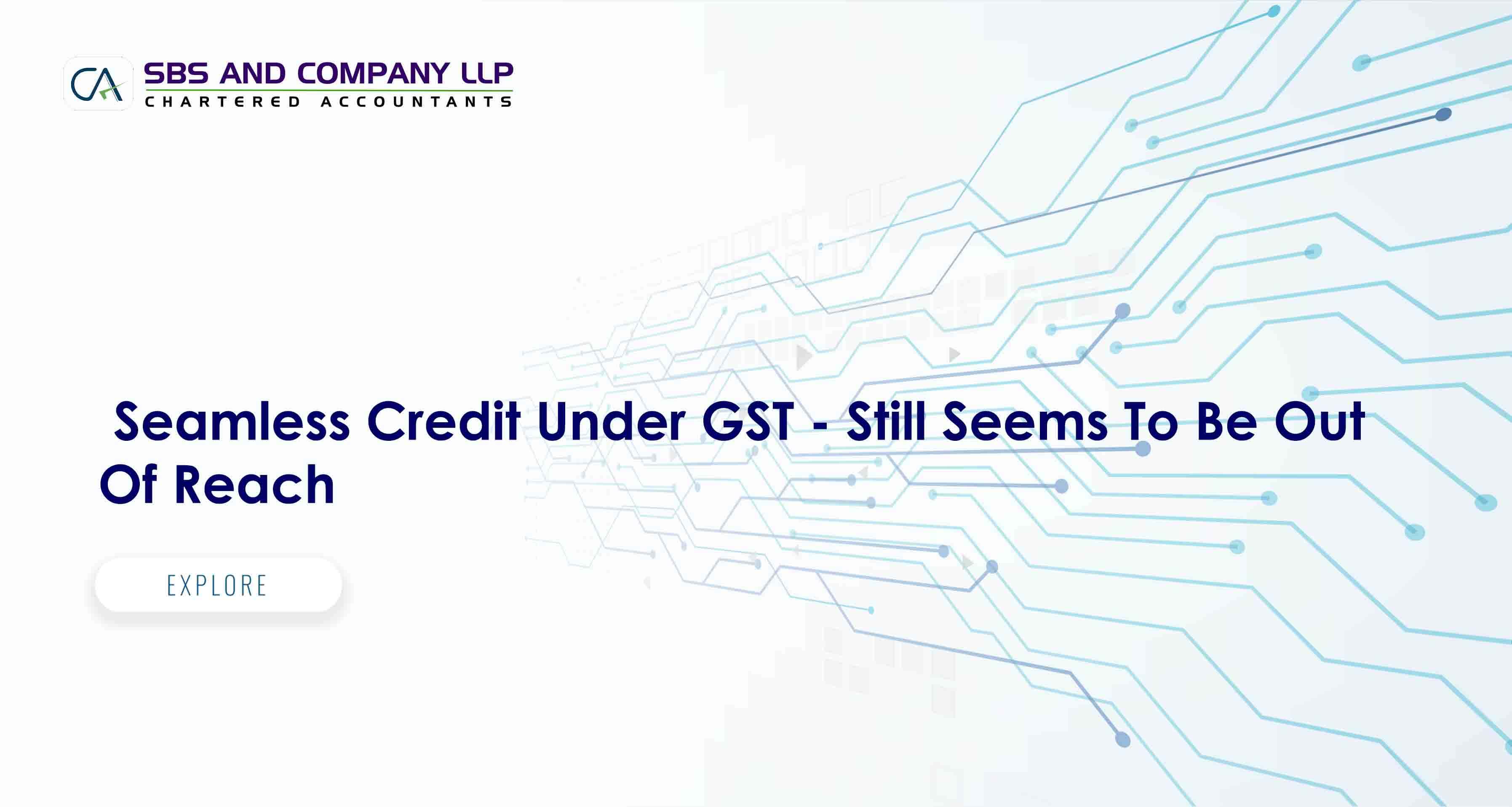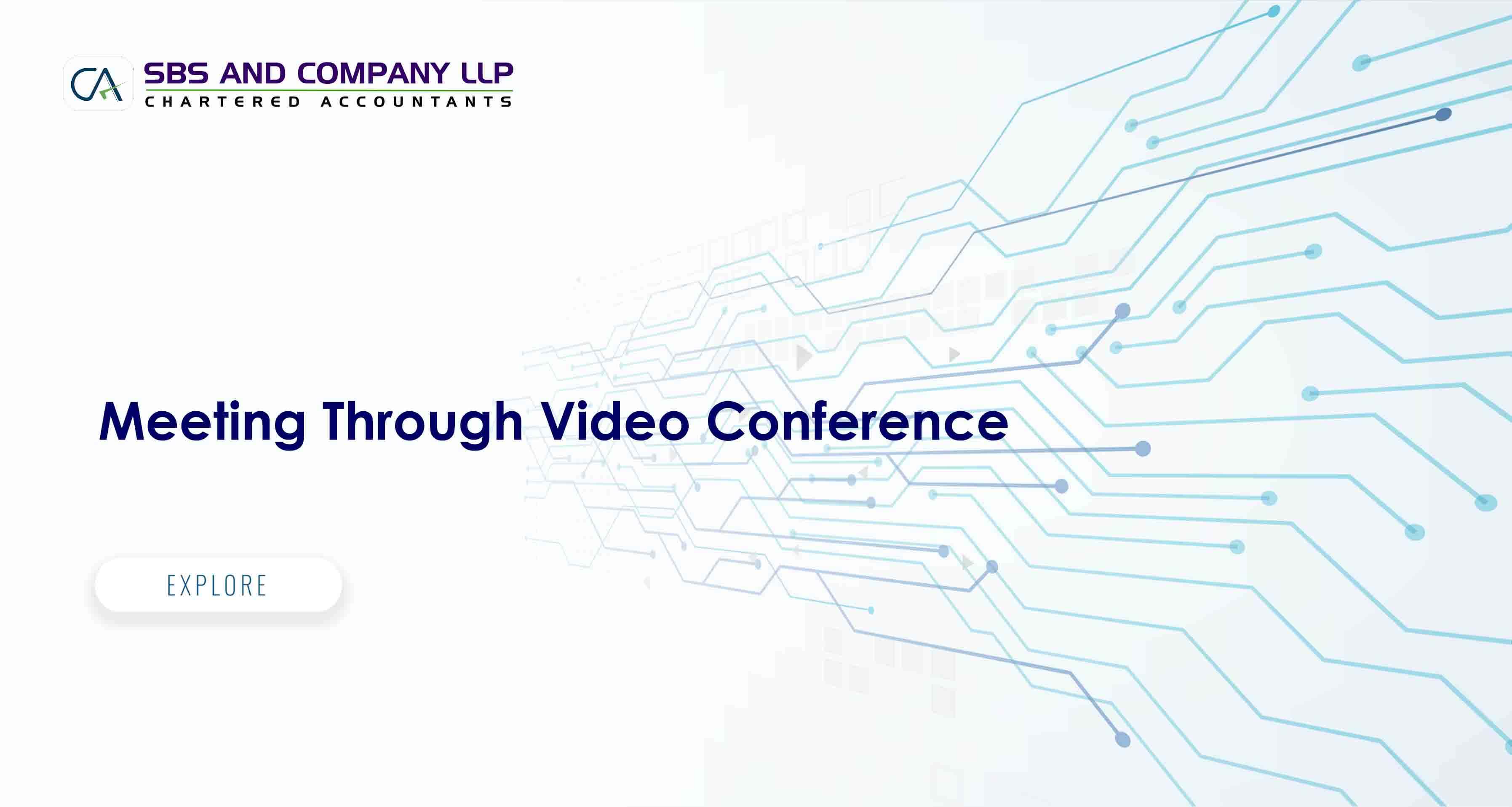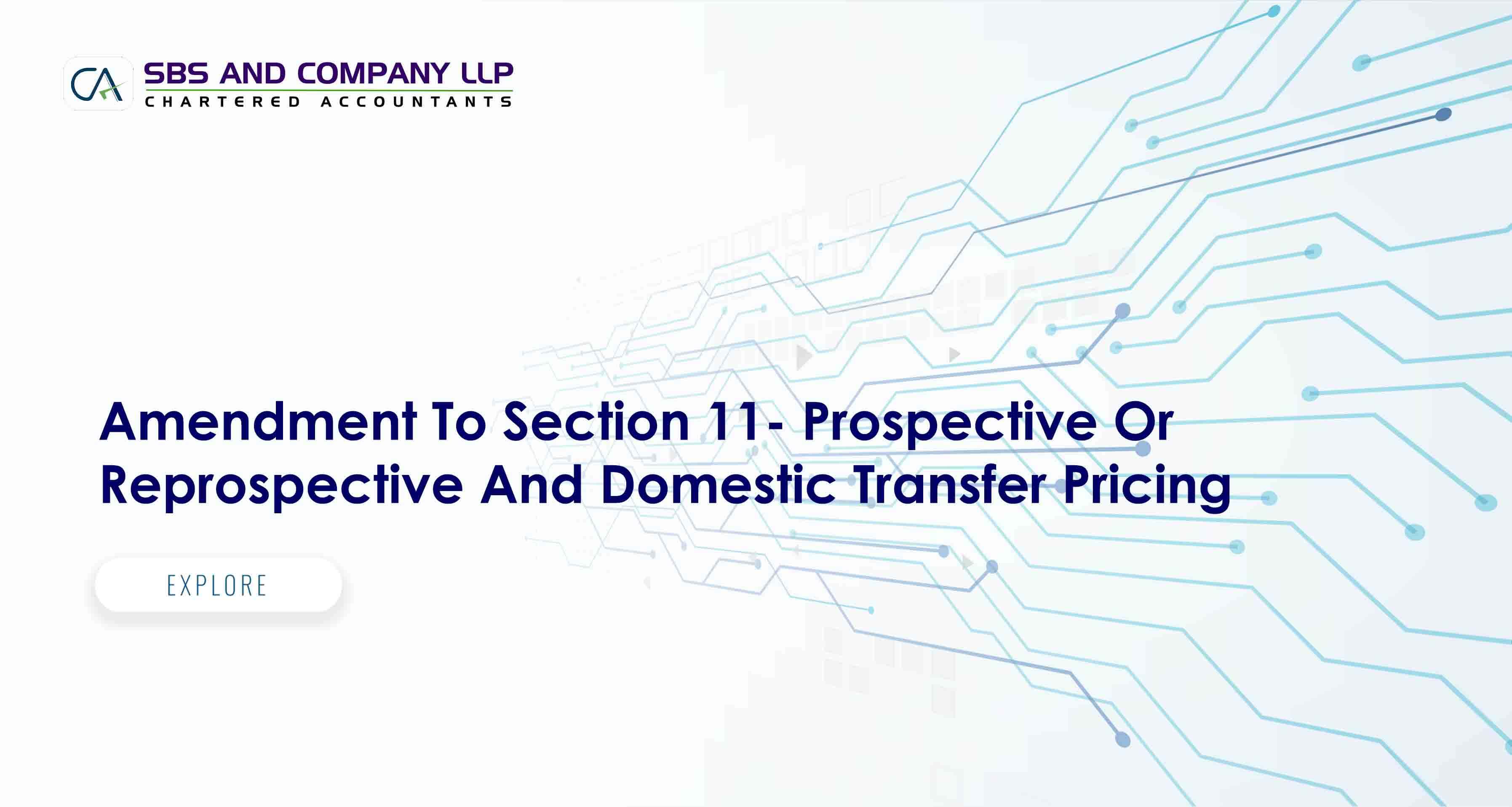INTRODUCTION:
GST is globally enshrined as a successful tax reform that will reduce the cascading effect of taxes, ensuring no tax burden on business houses and shifts the complete tax burden on to the end customer or consumer. Seamless Input Tax Credit (ITC) is often lauded as major benefit of GST by tax and economic experts. This is the driving force behind our country in embracing GST. Recently the CGST, IGST, UTSGST, GST Compensation bills are tabled in Parliament. The provisions of CGST bill relating to ITC will act as a litmus test for Government’s commitment towards the objective of conferring seamless credit to business houses. This article aims at bringing some aspects of the provisions relating to ITC which do not go in hand with seamless credit.
ITC AVAILABLE ON ANY SUPPLY USED OR INTENDED TO BE USED IN BUSINESS:
Sub-section (1) of Section 16 of CGST bill provides for entitlement to ITC which is reproduced as under—
“(1) Every registered person shall, subject to such conditions and restrictions as may be prescribed and in the manner specified in section 49, be entitled to take credit of input tax charged on any supply of goods or services or both to him which are used or intended to be used in the course or furtherance of his business and the said amount shall be credited to the electronic credit ledger of such person”
In terms of this section, a registered taxable person can claim ITC on procurement of all goods or services or both when they are used or intended to be used in the course or furtherance of his business. The expression ‘used or intended to be used in the course or furtherance of businesses’ is of wide connotation and this would simply imply that any expenditure which is incurred for the purpose of providing taxable supply of goods or services or both would be eligible for ITC. This is a welcoming move. Unlike the case of CENVAT Credit Rules, 2004 (CCR,2004), there are no definitions given for ‘input’, ‘input service’ and ‘capital goods’ which prescribe various conditions for eligibility viz. usage within the factory of production, direct nexus with provision of output service etc. That is to say even these terms appear in GST law, the same are without any conditions or restrictions as were there in earlier law. Thus, under GST regime every expenditure incurred for business would be entitled to ITC.
However, ITC has been barred on various items by way of exclusions under sub-sections (5) of Section 17 of the CGST bill. These items are similar to the exclusions given under the definitions of ‘inputs’, ‘input services’ of present CCR, 2004. Upon closer scrutiny of these exclusion clauses, they are even more detrimental compared to those under CCR, 2004. The comparative analyses of these exclusions are tabulated as under;
|
S No
|
Under CCR,2004
|
Under GST Regime
|
|
|
|
|
|
1
|
Services provided by way of renting of motor
|
ITC is available when rent-a-cab service is
|
|
|
vehicles except when motor vehicle is not a
|
used to provide similar category of service
|
|
|
capital goods i.e. credit is available only for
|
viz. Rent-a-cab. If a vehicle is hired by a
|
|
|
those engaged in transportation of goods,
|
person for imparting driving skills, ITC on
|
|
|
passengers, imparting driving skills, renting
|
such vehicle may not be available
|
|
|
of such vehicles
|
|
|
|
|
|
|
2
|
Outdoor catering, beauty, health care,
|
ITC is barred on all these services irrespective
|
|
|
cosmetic surgery, membership of a club,
|
of the fact whether they are incurred for use
|
|
|
health and fitness services, travel benefits etc
|
by employees or not. The only exception is
|
|
|
are barred from availment of credit only
|
travel benefits for which ITC is barred only
|
|
|
when such services are intended for personal
|
incase where the expenditure is incurred for
|
|
|
use of employees
|
use by employees.
|
|
|
|
|
ITC ON WORKS CONTRACTS ALLOWED IN CASE OF PLANT & MACHINERY:
Under the present CCR, 2004, credit of service tax/excise duty paid with respect to works contracts for construction of buildings, civil structures or for laying of foundation or making of structures for support of capital goods is not allowed. Credit is allowed only to a works contractor who is in turn providing similar works contract services. However service tax paid on works contract services used for construction of capital goods (other than foundation or support structures) is allowed as credit.
Under the GST regime, the said restriction on availment of ITC on works contract services is retained and ITC is allowed only to the said works contract service that is used for further supply of works contract service. The only exception for this restriction is works contract services relating plant and machinery, where all the receivers of the said supply are entitled to take ITC. For this purpose, the expression ‘Plant and Machinery’ is defined which is reproduced as under—
“plant and machinery” means apparatus, equipment, and machinery fixed to earth by foundation or structural support that are used for making outward supply of goods or services or both and includes such foundation and structural supports but excludes—
- land, building or any other civil structures;
- telecommunication towers; and
- pipelines laid outside the factory premises
In view of this definition, ITC is not available on all types of works contracts relating to capital goods but only those that fit into the definition of plant and machinery. Further, ITC is restricted on works contracts relating to land, buildings, telecommunication towers and pipelines. However on a positive note, works contract services relating to foundation and structural supports for plant and machinery are eligible for ITC which are currently barred from CENVAT credit under CCR, 2004
NO ITC ON INPUTS & CAPITAL GOODS USED IN MANUFACTURE OF ELECTRICITY FOR USE IN PRODUCTION:
Electricity is not excisable goods but yet CENVAT Credit is allowed under the present CENVAT Credit Rules, 2004 on inputs used in manufacture of electricity that is captively consumed in factory for production of dutiable goods. Electricity is going to be outside the GST tax net as they continue to be subjected to tax by electricity duty by States. There is no corresponding provision under the model GST law to prescribe for availing ITC on inputs and capital goods used in manufacture of electricity for captive consumption to manufacture goods that are subject to GST. In such absence, manufacturers cannot avail ITC of such inputs and capital goods which they are allowed to do so under the current regime. This will certainly shoots up the cost of the goods and thereby contributes to the cascading effect which is against the objective of GST.
ITC ON PRE-REGISTRATION EXPENSES— ELIGIBLE ONLY UPON TIMELY REGISTRATION:
Unlike the present Central Excise and Service Tax laws, ITC under GST regime is allowed only if the assesse is registered under GST at the time of procuring goods or services. In case of any procurement prior to registration, ITC can be claimed only in accordance with the manner provided under Section 18(1) of the CGST bill which is reproduced as under—“A person who has applied for registration under the Act within thirty days from the date on which he becomes liable to registration and has been granted such registration shall, subject to such conditions and restrictions as may be prescribed, be entitled to take credit of input tax in respect of inputs held in stock and inputs contained in semi-finished or finished goods held in stock on the day immediately preceding the date from which he becomes liable to pay tax under the provisions of this Act.”
In view of the above provisions, ITC relating to procurements prior to GST registration will be allowed only if GST registration is sought within the stipulated time period of 30 days from the date on which the assesse is liable for registration and the registration has been granted. In case of delay in applying the registration beyond the stipulated period, it seems that this provision is barring the assesse to claim ITC on expenditure incurred prior to registration.
Further, the section allows the assesse to claim ITC only to the extent relating to inputs held in stock and inputs contained in semi-finished or finished goods held in stock on the day immediately preceding the date from which he becomes liable for registration. This implies that there is no enabling provision to avail ITC relating to input services (otherwise related to stock) and capital goods that are procured prior to registration even though registration is obtained within the stipulated time period.
The condition of mandatory registration at the time of procurement is quite understandable as credit availment under GST regime is under a controlled electronic environment as supplier has to accept the corresponding liability and pay the tax by disclosing the said supply in his monthly GST returns.However this should not by any means operate as hindrance to deny credit to an assesse who failed to obtain registration within the stipulated time period.
It is advisable to prescribe a suitable mechanism to bring the procurements prior to GST registration under the said controlled electronic environment and allow assesseto avail the ITC. May be the fresh registrant is permitted to file a return immediately after registration with information relating to his procurements and ITC shall be allowed only when such information is matched with that the corresponding supplier.
ITC AVAILMENT ON GOODS NOT IN ALIGNMENT WITH TIME OF SUPPLY:
There is no concept of time of supply for goods either under VAT or Excise laws under the existing regime. The concept of point of taxation (akin to time of supply) is prevalent under Finance Act, 1994. The CCR, 2004 provides for availment of CENVAT Credit by receiver of services in case where he has paid advances towards taxable services and service tax is charged on such advances by the provider of services.
In terms of section 12 and section 13 of the CGST Bill, the liability to pay GST arises at the time of supply of goods or services which in general is the earlier of the date of issue of invoice (the prescribed last date for such issuance in the event invoice not issued) or the date on which supplier receives the payment with respect to the supply.
Subsection (2) of Section 16 of the CGST Bill provides for the conditions to be satisfied by registered taxable person in order to be entitled to ITC in respect of supply of goods or services. The relevant part of the section is reproduced as under;
“Notwithstanding anything contained in this section, but subject to the provisions of section 36, no registered taxable person shall be entitled to the credit of any input tax in respect of any supply of goods and/or services to him unless,-
- he is in possession of a tax invoice or debit note issued by a supplier registered under this Act, or such other taxpaying document(s) as may be prescribed;
- he has received the goods and/or services;
- the tax charged in respect of such supply has been actually paid to the account of the appropriate Government, either in cash or through utilization of input tax credit admissible in respect of the said supply; and
- he has furnished the return under section 34:
PROVIDED that where the goods against an invoice are received in lots or instalments, the registered taxable person shall be entitled to take credit upon receipt of the last lot or installment:
PROVIDED FURTHER that where a recipient fails to pay to the supplier of services, the amount towards the value of supply of services along with tax payable thereon within a period of three months from the date of issue of invoice by the supplier, an amount equal to the input tax credit availed by the recipient shall be added to his output tax liability, along with interest thereon, in the manner as may be prescribed.
Explanation.—For the purpose of clause (b), it shall be deemed that the taxable person has received the goods where the goods are delivered by the supplier to a recipient or any other person on the direction of such taxable person, whether acting as an agent or otherwise, before or during movement of goods, either by way of transfer of documents of title to goods or otherwise“
In terms of the above reproduced section, a registered taxable person is allowed to take ITC only upon receipt of goods or services apart from holding invoice, filing the return, tax charged has been paid by supplier etc. In cases where advances are given towards the taxable supply of goods or services, though the tax has been paid upon such advances by virtue of the provisions of time of supply, the receiver cannot avail ITC immediately and can only avail ITC after the receipt of goods or services.
This intention is further clearly evident from the first proviso of said section 16(2), which provides that in case where goods are received in lots or installments, ITC can be availed only upon the receipt of last lot or installment. Thus under GST regime, ITC cannot be availed immediately upon payment of tax towards advances paid towards supply of taxable goods or services. The recipient of supply has to wait till receipt of goods or services to avail ITC. This may cause undue hardship and may have a bearing on working capital of business houses.
REVERSE CHARGE IS AN EXEMPTED SUPPLY:
Sub-section (2) of section 17 of the Revised Model GST law provides for reversal of proportionate ITC in case where the registered taxable person is engaged in providing both taxable and exempted supply. The said provision is reproduced as under;
“Where the goods and / or services are used by the registered taxable person partly for effecting taxable supplies including zero-rated supplies under this Act or under the IGST Act, 2016 and partly for effecting exempt supplies under the said Acts, the amount of credit shall be restricted to so much of the input tax as is attributable to the said taxable supplies including zero-rated supplies.
- The value of exempt supply under sub-section (2) shall be such as may be prescribed, and shall include supplies on which the recipient is liable to pay tax on reverse charge basis, transactions in securities, sale of land and, subject to clause (b) of paragraph 5 of Schedule II, sale of building
Under the present Service Tax laws, a service for which reverse charge is applicable cannot be treated as an exempt service and there is no requirement to reverse the common CENVAT Credit on proportionate basis. However under GST regime, in terms of the above reproduced sub-section (3), exempt supplies include those supplies provided by a registered taxable person for which GST is required to be paid by recipient of supply under reverse charge mechanism.
In such event, the registered taxable person is required to reverse a portion of ITC though he is engaged in providing those supplies which are subject to GST payable either by him or by the recipient of supply. This will also mean that with respect to supplies that are going to be notified under GST for reverse charge, Government on one hand is going to get the revenue in full on such supplies and on the other hand it will deny the ITC by requiring the corresponding supplier to restrict ITC. This requirement of reversal of ITC by supplier to extent of his supplies covered under reverse charge would break the ITC chain and contribute to the cascading effect. This provision requires reconsideration in light of the spirit behind GST (seamless credit).
CONCLUSION:
In view of the above discussion, it is amply clear that the provisions of ITC under the CGST Bills incorporated enough hurdles to restrict the free flow of credit and some of the provisions are even more detrimental in denying ITC as compared to the current CCR, 2004.Thus seamless credit, the much hyped benefit of GST is seemingly still out of reach for business houses. Industry, trade and professional bodies have to make suitable representations in this regard and GST Council, Centre and State Governments have to re-consider these in fair manner after all the reason for introduction of GST is to overcome the trade barriers and reduce the cascading effectthereby encouraging the industry for voluntary and prompt tax compliance.


